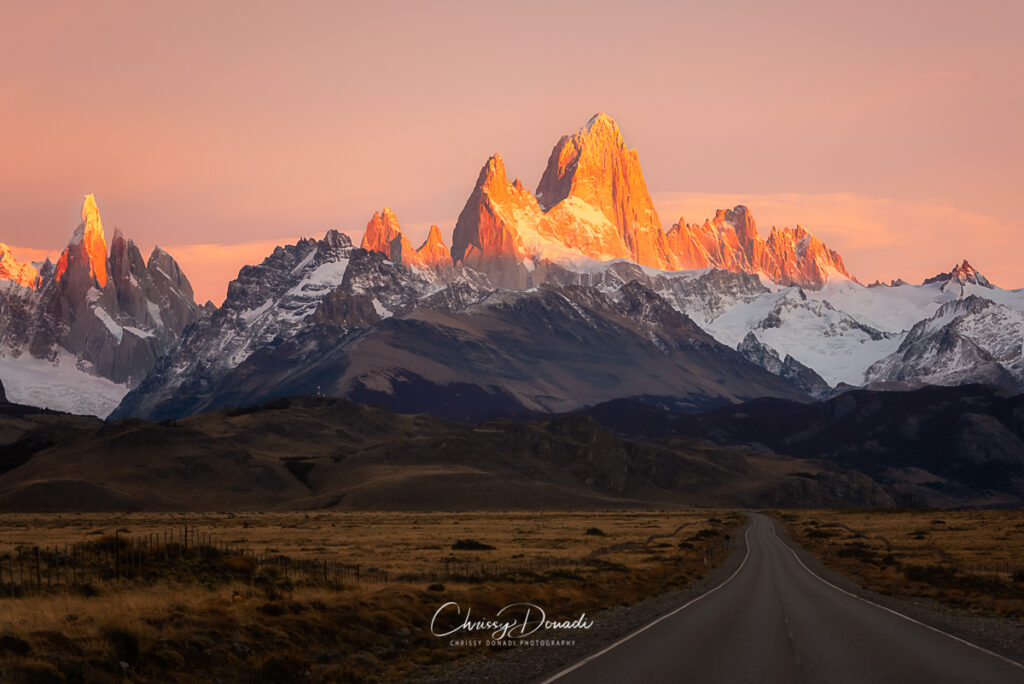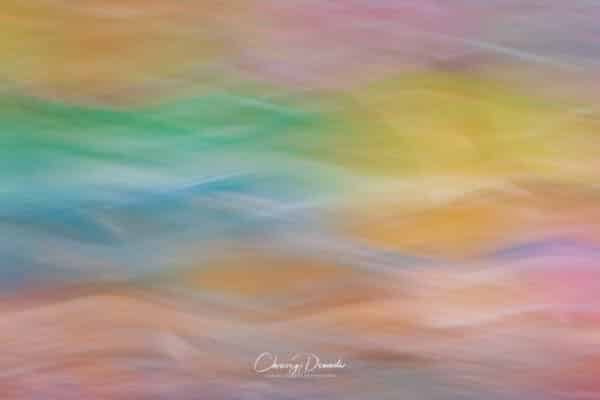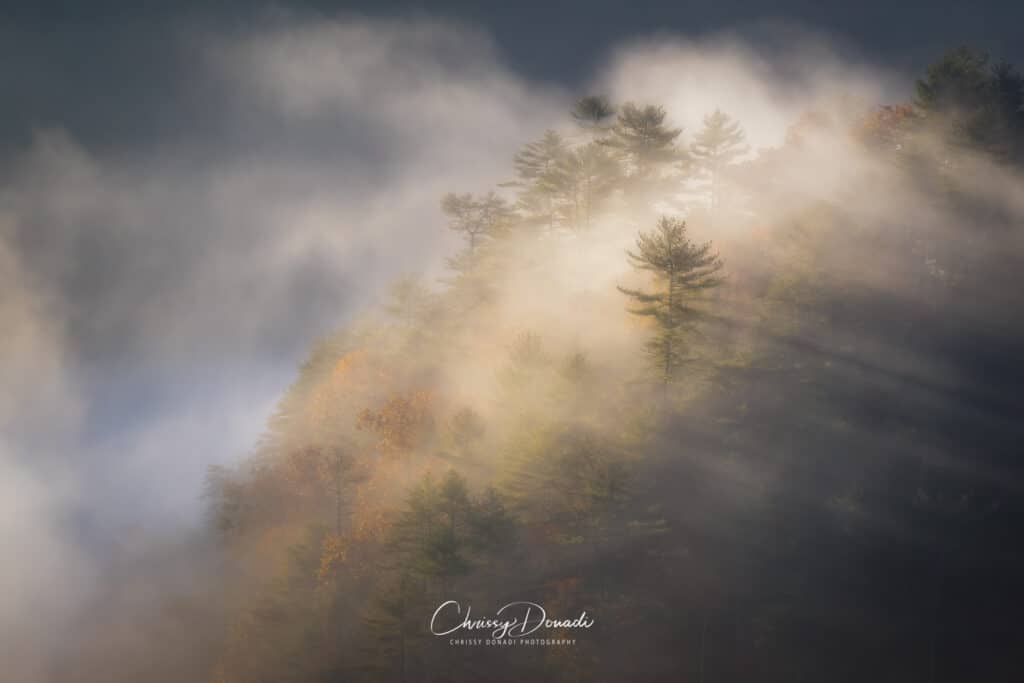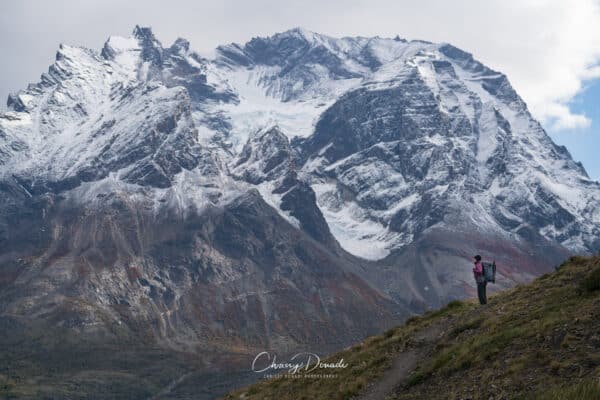When I entered the realm of landscape photography, it was a hunt for perfect scenery with captivating light. There were rungs to reach on the ladder and each “successful” photo felt like a trophy accomplishing the task at hand. I say that proudly because I believe that is part of the photographic process. That phase helped me improve my photography. I respect those who chase the photo living a life that is often more away than it is home. However, I think the people who enjoy that are as rare as the conditions they seek. When we start pursuing landscape photography, we try that realm and learn it is grueling and full of disappointment since it’s rare for conditions to align perfectly. Somewhere along my journey, I adopted three important words which helped me transform my photography and continuously assist in my pursuit to remain a happy and creative photographer.
Today, I view nature and landscape photography as a practice that can be done on a great adventure or in a puddle of a parking lot. It’s a craft to master, yet that mastery is a never-ending journey. Although, with no final destination, it’s often difficult to see where we are on that road. After we master the basics, we find ourselves in the cycle of being eager to learn but easily frustrated, happy to photograph but then disappointed with the results, wanting to be part of a community but nervous about sharing our work or joining a photo excursion, workshop, or conference.

We’ve all felt that frustration, disappointment, and self-doubt. These are normal feelings when learning. I repeat, these are normal feelings. However, view these feelings as slowing down when driving through a school zone or a brief pause when reaching a stop sign. They are not a complete detour or wrong turn. Remember, if there is no final destination, everything is bumps in the road and some big hills to climb. It’s important to remember what is happening during those times is learning.
That shift in thinking may seem trivial, but it couldn’t be further from the truth. If our mindset is that every session delivers more experience under our belts, we can shift our thinking to be positively constructive. And that’s the way to stay motivated and avoid those ruts of feeling stuck in photography.
The future me will always be better than the photographer I am today. And the photographer I am today will always be ahead of who I was yesterday.
Although, sometimes, it’s hard to develop new habits and a new way of thinking. Our brains need time to adapt and adopt this methodology so let’s give our tired brains some assistance. These are the three words that help me remain a happy photographer.

What if?
If challenged, I could write a book with a plethora of footnotes referencing studies about the importance of curiosity. The urge to explore and seek novelty is an evolutionary trait for us humans (take that AI!), particularly when we are young. This is what helps us gain knowledge about our constantly changing environment. Cultivating curiosity not only helps our neuroplasticity but also expands our empathy, boosts our achievement, and is associated with higher levels of positive emotions. All wins in my book.
Great Chrissy, so what does this have to do with photography? So often when we are feeling unsure in the field, those little voices of negative self-talk and self-doubt start to whisper. Even the quietest of those whispers put up roadblocks to our creative brains. The easiest way to cue that creativity back to center stage is simply to ask yourself “what if?” and fill in the blank.
What if I tried slowing my shutter speed for some intentional camera movement (ICM)?
What if I changed my perspective and tried to get a little lower for this composition?
Hmmm, what if I froze those water droplets with a fast shutter speed?
What if the river could talk to those big boulders, what would it say?
What if I tried this image in black and white?
Suddenly, you’re back to experimenting, being curious about your environment with little to no expectations. Your brain shifts back to being full of wonder and play – and that’s when we create our best work. My full mantra is “I wonder… what if… let’s try…”, and that’s totally ripped from Sesame Street. We’re in the phase where we watch a lot of Sesame Street these days, and one of the theme songs centers around the words “I wonder… what if… let’s try…” I don’t know how many times I listened to that song before the lightbulb went off, but I’m thankful it did because it’s probably helped me as much as it’s helped my little one just in different ways.

Yet
Creativity and the experience of flow thrive on being matched to your skill level. They say that your challenge has to be just outside 5% of your skill set. I don’t know about you, but I have yet to find the posted signs out in nature that tell me the difficulty level for each location.
Sometimes, things are easy and you feel bored or unengaged. Other times, things are hard and frustration starts to creep into the experience. And sometimes, we find the perfect match for us and lose all sense of time being fully immersed in the experience.
If you’re bored, either try increasing the challenge factor or be okay with simply being out in nature. Not every outing needs to result in coming home with a “banger of an image” as the kids call it.
On the other hand, if you are feeling lost or have that sense of irritation, know it’s just a speed bump or stop sign. Know that you’re going to get wherever you’re going, it just might not be today. Reframe your thinking to include the word “yet”.
I have no idea what to do with this scene… yet.
Ugh, I don’t know how to focus stack… yet.
I don’t know how to process this image… yet.
Well, that didn’t work. I have no idea how to photograph the moon… yet.
I don’t know how I photographed the whole trip in jpeg…
(okay, it doesn’t work here, some lessons we just have to learn the hard way)
Reminding your brain that you will eventually reach that goal keeps your motivational flame lit. That’s a critical part of the process. Part of mastering a skill is through deliberate and dynamic practice and play for that skill. During this practice/play, we actively think about what we are doing step-by-step. It’s a cognitive stage where we are consciously practicing a new skill and learn from our mistakes. Eventually, we advance to the autonomous stage where we can perform the skill essentially on auto-pilot. This is the key to improving our photography. But to get there swiftly, we need to keep our heads in the game and stay motivated. That’s why I remind my brain with the word “yet” because I’m a work in progress, and I’m doing the work.

Framing Our Thoughts to Transform Our Photography
I wonder what other lessons I could take from Sesame Street and apply to my photography. What if I did a whole series of articles on them? Let’s try. Actually, I’m not sure if that is a good idea… yet.
But until I figure it out, I hope my favorite three words help you as much as they helped me remain a happy nature photographer.
Excellent post. I’ve just been into “serious’ photography for a few months and relate to all the challenges you mention, but I’ve definitely gotten better and become more knowledgeable than when I started. Have a small exhibition coming up soon, followed by my first workshop in May. Having goals like this to shoot for is helpful for me to stay motivated.
Thanks Brian! There is such a long period of time between no longer feeling like a beginner and then finally feeling like a proficient photographer, and that stretch can easily feel discouraging at times. It’s good to know we’ve all been in that boat and the things we’ve learned that have helped. Good luck with the exhibition and the workshop!
I often hear “one of these things is not like the other” when my eye catches an oddity in a natural scene. Probably dating myself with that song. But I love oddities, things that don’t belong they keep me interested. Love the Sesame Street connection. As usually great article, you had me laughing. So true the inner voice is our own worst dragon we must learn to slay! I have not, yet.
Ha! You know I adore that last line! Thank you and love that you embrace your fascination with the oddities. We all have that inner voice to slay – and it will happen eventually. It’s also that inner voice that keeps pushing us to improve so it’s finding the balance where that voice is a passenger on the journey but isn’t able to sit in the driver’s seat.
Hello Chrissy,
I’m recently into photography, and your perspective and narration about landscape photography are very inspiring. Initially, as you mentioned frustration, disappointment, and self-doubt are my constant friends now. I hope to get rid of them and get stunning landscapes like you.
Thanks for reaching out and we’ve all felt that way learning photography (and still have bouts of self-doubt at times). It’s’ normal, but we have to let it drive us. As long as we keep learning and growing from our experiences, we’re making progress. Happy photographing!
Good Info & it helps
Filled with self doubt (being a self sabotaging perfectionist) but trying to work through, and past that, I have found this article more encouraging than you can imagine. Thank you, thank you, thank you, for providing me with a new “can do” narrative.
Welcome to the perfectionist club – you’re not alone at all. And I hope adopting this “can do” narrative helps you as much as it has helped me. Thank you for taking a moment to comment!
ver nice Creativity experience photography thanks for it
Hi Chrissy! I absolutely loved this article! The three words “What if?”, “Yet,” are a game-changer for transforming photography. Your perspective on embracing curiosity and continuous growth is inspiring. Such a relatable and motivating read for photographers at all levels. Kudos for sharing these valuable insights and encouraging a positive approach to the photographic journey!
I can completely relate to your journey in landscape photography. It’s true that the pursuit of that perfect shot can be both exhilarating and at times, disheartening. Your insight into the importance of the three words is spot on. In my experience, “Patience, Perseverance, and Passion” have been my guiding principles as well. Patience, because nature doesn’t always cooperate; Perseverance, because the learning curve never truly ends; and Passion, because it’s the fuel that keeps us going. Landscape photography is indeed a never-ending journey, and embracing these three words has made it a more fulfilling and enjoyable one for me. Thanks for sharing your wisdom! 📷🌄👏
It doesn’t make any difference how old one is, Sesame Street can always teach something about ourselves and the world around us.
Isn’t that the truth.